ESCAPE
Eastbound excursions — the traveller’s guide to happy road-tripping through the Karoo heartland
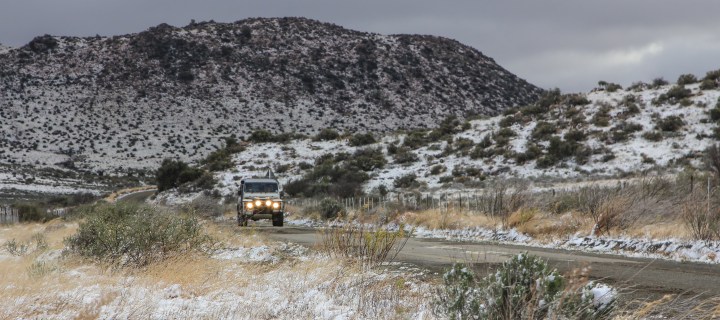
From packing the perfect padkos to spotting South Africa’s national bird, Chris Marais and Julienne du Toit offer up their tips and tricks for travelling through the Karoo.
Remember the old Chappies Chewing Gum wrappers with the ‘Did You Knows’ inside? Well, here’s a stab at a little Karoo Heartland version of that.
Snow time!
Midwinter in the Karoo and, if you’re lucky, there are snows about.
For visitors and locals alike, it’s a time for gumboots, thick gloves, industrial-strength coats, mohair socks and beanies. As one drives out into the cotton wool countryside, the sun emerges and the light sparkles. There are heavy snowdrifts on bossies, fence posts, prickly pear fields, windpumps and acacia trees. The incredible hills that surround look like icing sugar outcrops.
It’s July, but it all feels very, very Christmassy. And here’s a secret: you’re now in the most romantic winter spot in South Africa. Snowtime in the Eastern Cape Karoo can be lots of fun, but be sure to heed the route warnings, stay on the main roads and travel with basic winter gear like candles, snacks, water, a flask of something hot and a couple of those fluffy knee-blankets.
When in Nieu-Bethesda, head to Victoria Nance’s Dustcovers Bookshop, buy a page-turner and settle under the covers for a long, happy read.
Padkos — a moveable feast
Padkos is not an island in Greece, it’s the Afrikaans word for road food. And, particularly in the Eastern Cape Karoo, it’s a very important word.
Padkos saves travellers on a bleak Sunday in midwinter, when you’re driving along between towns and the padstal you were aiming at is unexpectedly closed. That flask of coffee organised in the morning. That bag of sliced biltong bought three towns ago. Those two bottles of home-brewed ginger beer picked up at the last farm stay. Oh, and for the Banting-free traveller, that packet of homemade rusks stashed away in the picnic hamper. Padkos.
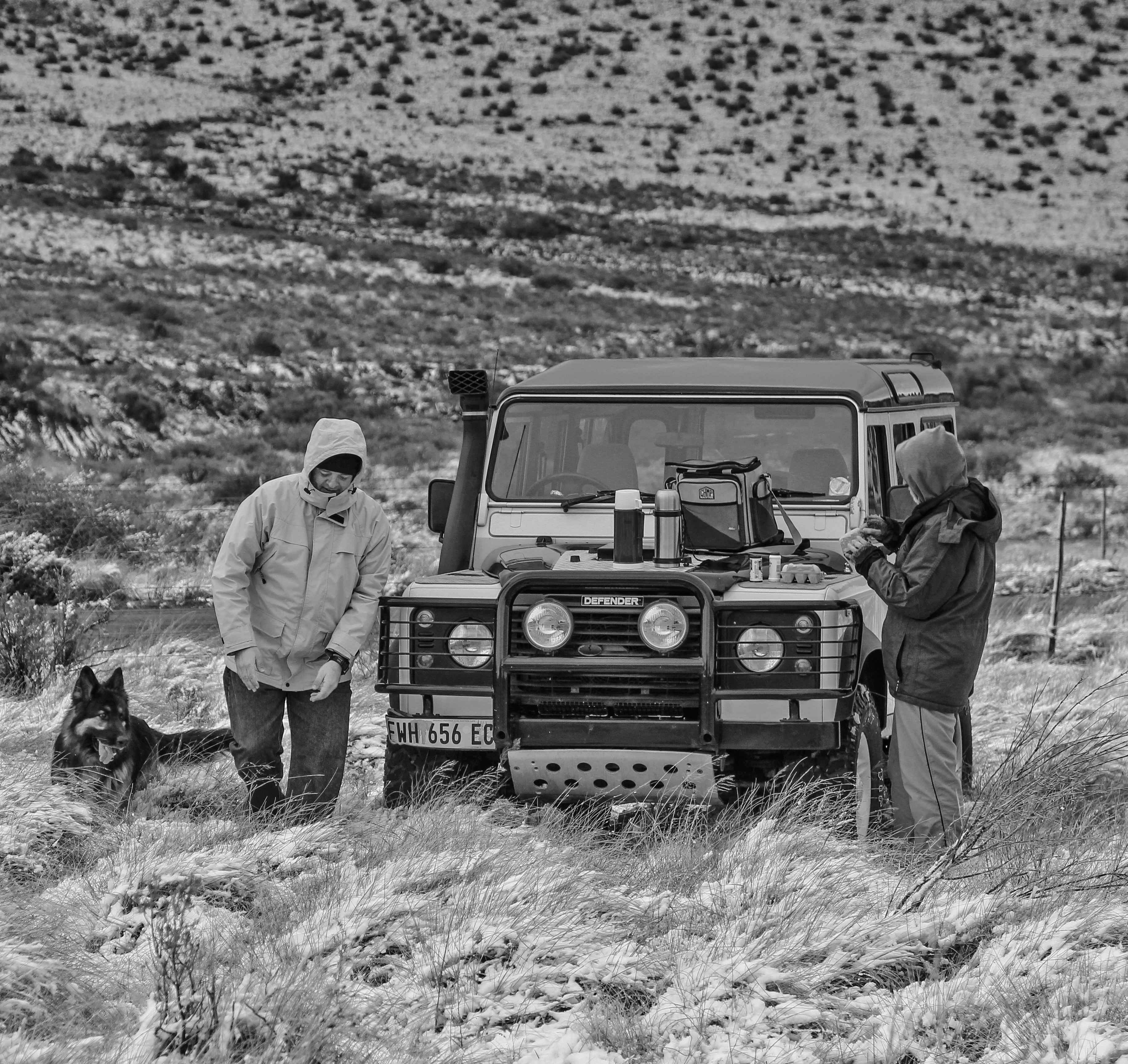
Padkos: here in the Karoo, we didn’t invent it – we perfected it. (Photo: Chris Marais)
You might not know it, but those items were staples of the trekboer families more than 230 years ago, when they left the Cape for the hinterland in search of a new life.
Meandering through the Eastern Cape Karoo, there are going to find plenty of restaurants and farmstalls to eat at. Whenever there’s a festival or a farmer’s market on the go, one is able to source grub from the region. This becomes a Food Safari: roosterkoek from Somerset East, cheese from Cookhouse, biltong from Cradock, kudu salami from Schoombee, lamb pies from Hofmeyr, preserved quince from Graaff-Reinet, craft beer from Nieu Bethesda — the padkos box just became a moveable feast.
Sweet Thorn trail
In the eastern Karoo, the tree most likely to be piercing your flesh and plucking at clothes is a Vachellia karroo. Better known as Mimosa, Karoo Thorn, Sweet Thorn, or its former name, Acacia karroo, it has impressive sharp white spikes, lacy leaves and dark bark, exudes sweet gum and sports fragrant yellow flower balls in summer. This most common of South Africa’s trees is spreading deep into the Eastern Cape, extending along rivers, streams and dry watercourses, thriving in disturbed soils.
Vervet monkeys and kudu antelope have followed its slow-motion invasion.
Kudus browse the leaves and eat the dried, protein-rich pods in winter. This has helped them spread further than Middelburg, while 60 years ago, they were virtually unknown north of Steytlerville.
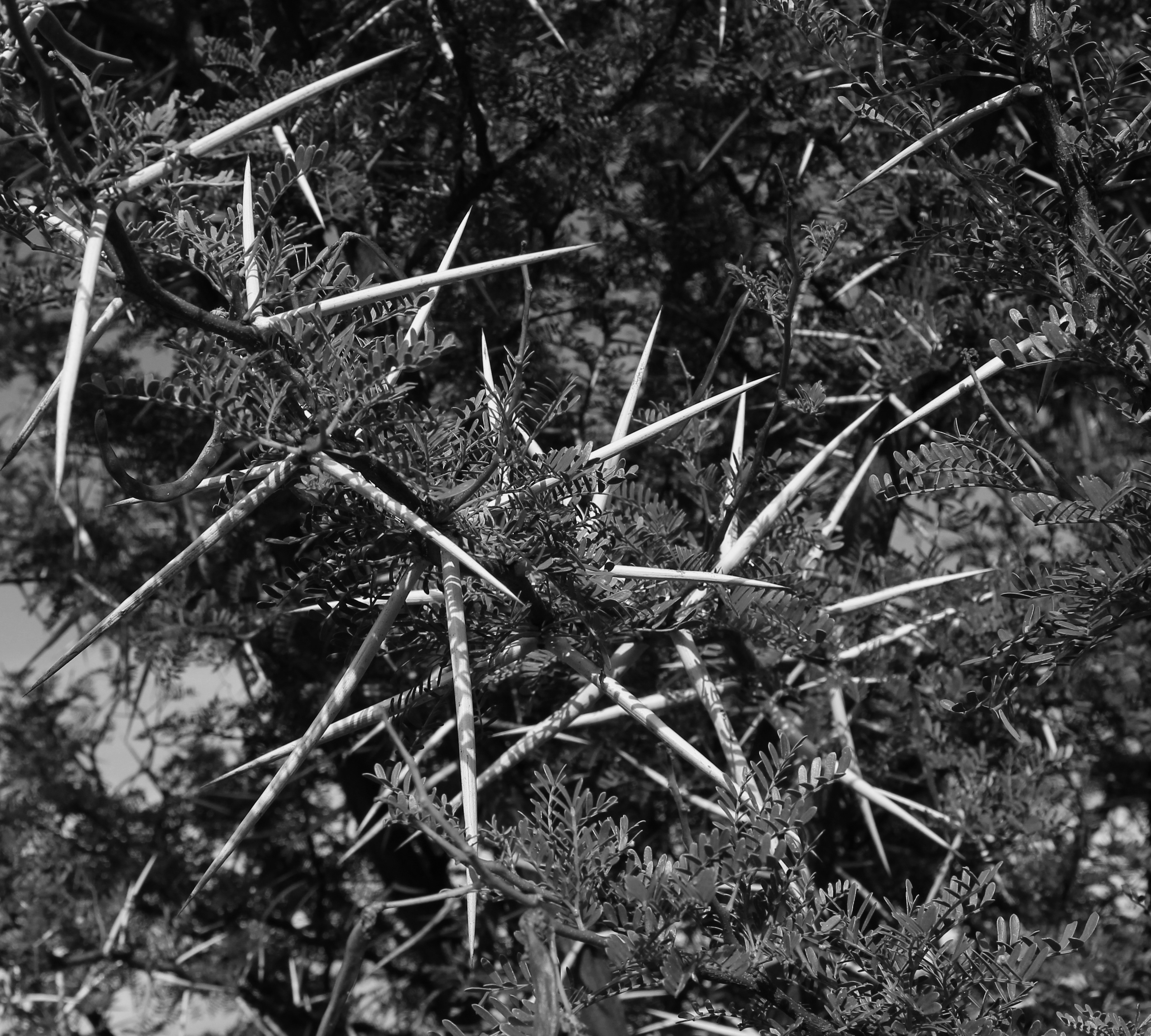
The Sweet Thorn (acacia Karroo) – a Karoo Heartland Special, which also makes perfect braai wood. (Photo: Chris Marais)
Similarly, vervet monkeys can live mainly off Sweet Thorn trees, eating gum, flowers, seedpods and leaves. But they are always on the lookout for easy food, which is why vervets often loiter alongside roads. These small, silvery simians have round heads, black hands and pink eyelids. The males have bright blue scrota, which is why their Afrikaans name is blou-aap.
They are very intelligent, able to communicate with many facial expressions and body postures, with at least 36 recognisable language sounds. Vervet babies cling to their mothers for three months and are only completely weaned after a year.
Blue angels
The scientific name assigned to blue cranes is probably the best indication of how exceptional they are: Anthropoides paradiseus.
Roughly translated, it means ‘Like a Human of Paradise’. The singularly dry and mostly academic South African National Biodiversity Institute suggests that this name refers to the blue crane’s “almost angelic appearance”. Threatened by habitat extinction, powerlines and poisoning, blue cranes have two population strongholds — the eastern half of the Karoo and the Overberg in the Western Cape.
Both have wide open spaces, grasslands and plenty of food beloved by blue cranes: seeds, roots and bulbs along with grasshoppers, mice and frogs. They both have sheep — and cranes seem to just love hanging out with them.
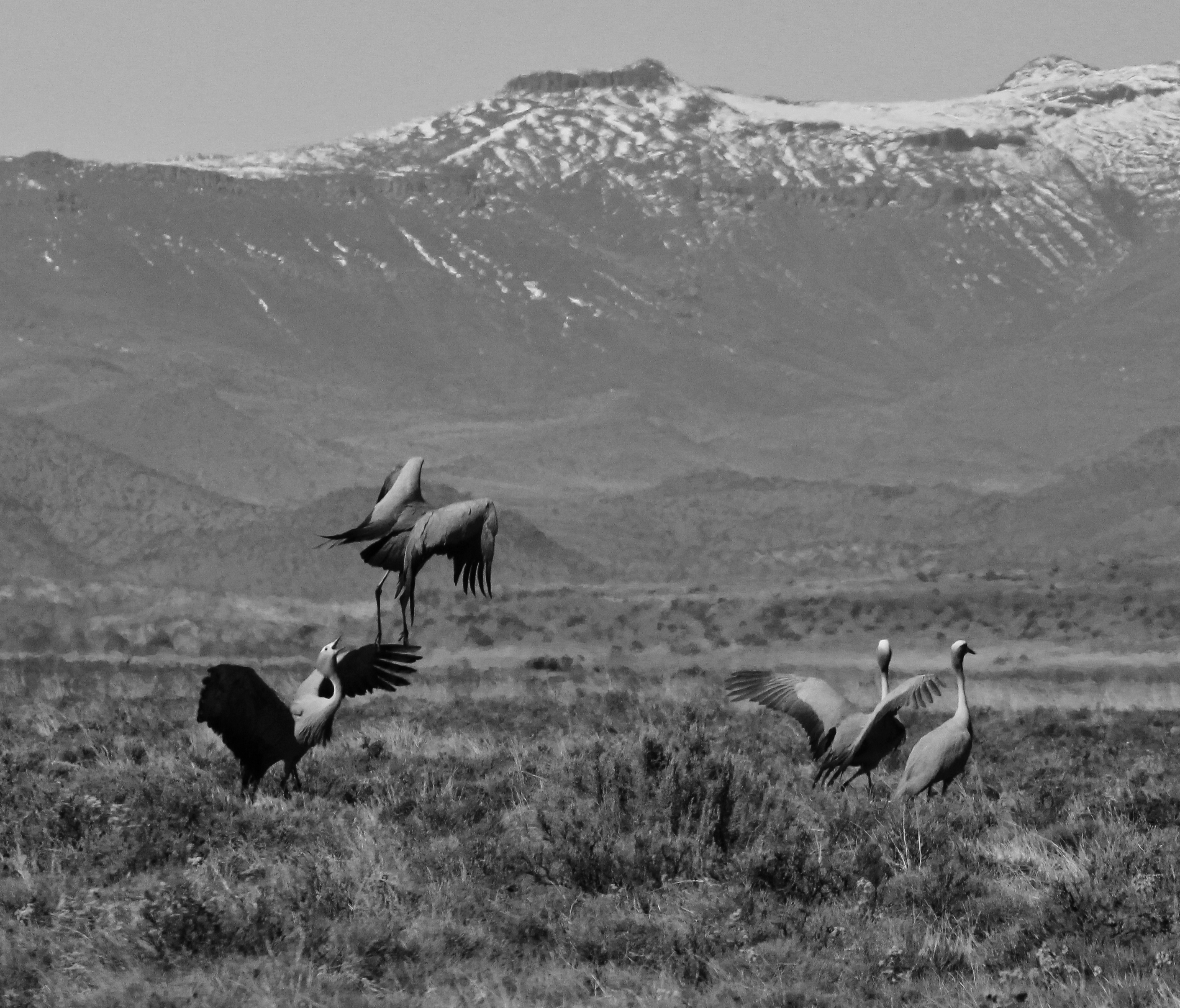
Blue Cranes in the Lootsberg Pass on the way to Nieu-Bethesda. (Photo: Chris Marais)
And as one might expect of these omnivorous angels, blue cranes mate for life, utterly faithful to their partners until death.
In winter they are often seen gathered in large flocks in places like the Lootsberg Pass Valley. In spring they pair up and find their own territories, which they defend as fiercely as archangels. This is when blue crane couples make or renew their vows through dance. Not tango, not cha-cha, nor even a waltz, but a kind of bird ballet full of passionate pas de deux, pirouettes and graceful leaps, often tossing bits of vegetation or even small mammals into the air for added drama and appeal.
A farmer’s workshop
There’s something deeply adventurous about rootling around a Karoo farm junkyard, clutching a camera and a very big stick. The camera is for when the morning light falls softly on the red rump of an ancient, pensioned-off Massey Ferguson tractor. Not to mention the rusty old signs, retired ploughs sinking deep into the ground and venerable pieces of windpumps that have seen better days.
The very big stick is for all the stray critters possibly lurking behind the back wheel.
“That’s not junk,” a farmer might assure. “My staff and I know exactly what’s out there. You’re talking about our official spares department.”
The farmers of the Karoo have been making a plan with assorted spare parts, a pair of pliers and duct tape for generations.
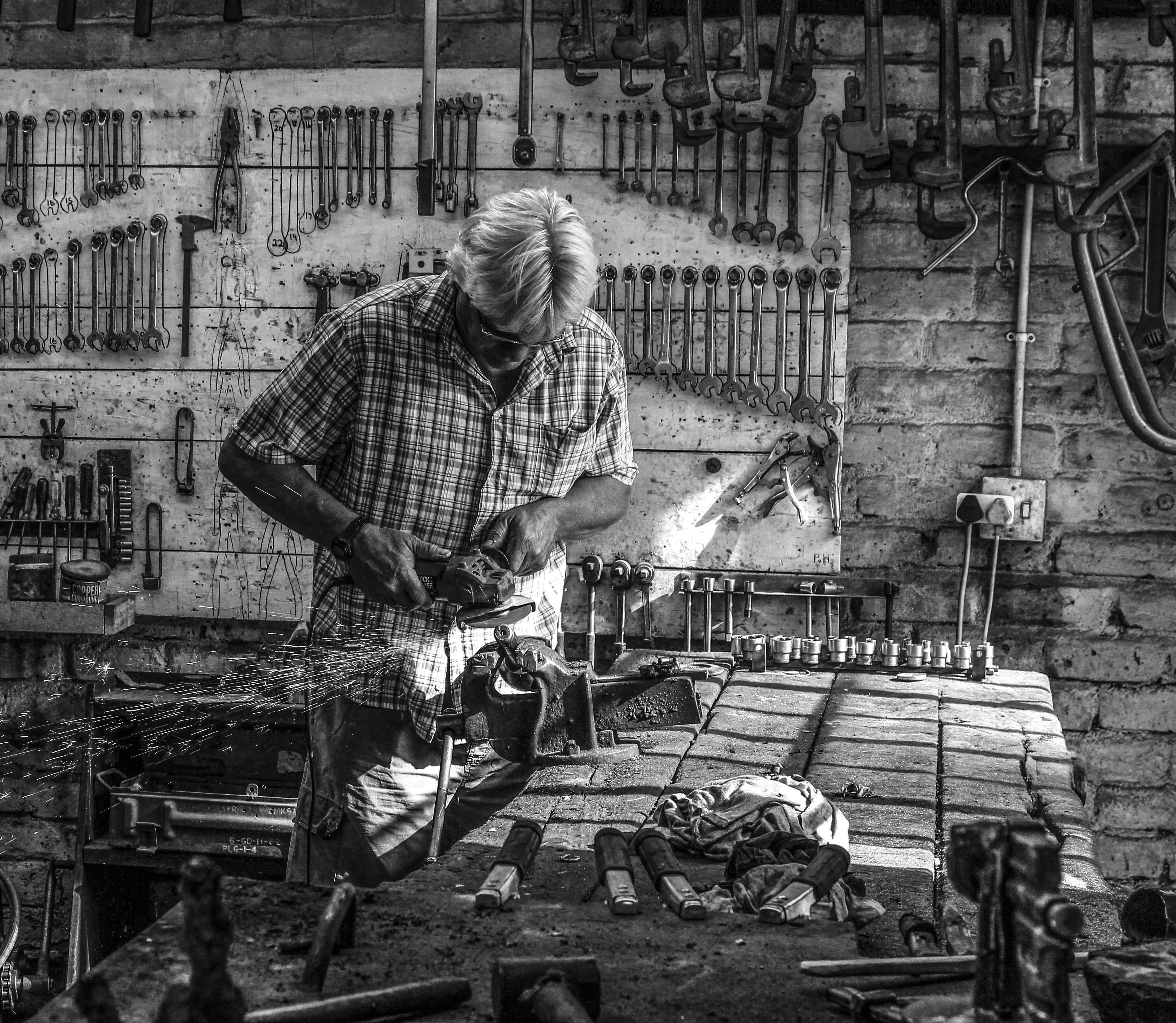
Karoo farmer Peet van Heerden in his beloved workshop, with a never-ending source of spares. (Photo: Chris Marais)
The working dog
Arriving at an overnight farm stay, the host and his pack of dogs might be there to greet you. Amongst the mixed bag of Boerboels, Jack Russells and such, you’ll meet a friendly but diffident fellow called a Border Collie.
The next morning, that same dog will be spotted at work with the stockmen and the sheep. It will be a different animal today, attention completely fixed on both the flock and handler, responding to a wide range of whistles and curt commands in a fluid, fast manner.

Working dogs on a Karoo farm – essential for herding livestock. (Photo: Chris Marais)
You’re looking at a true Karoo legend. Although blessed with a glossy coat and generally well-mannered, the Border Collie should really be judged on only one trait: the ability to work with livestock.
On the job, the dog will generally keep its head low to the ground and tail tucked between its legs, able to move swiftly this way and that without stopping. The dog will be so obsessively focussed on the sheep, it will look like it has successfully hypnotised them into doing its bidding — a joy to watch.
Back in 1960, a group of Karoo farmers gathered in Graaff-Reinet and formed the South African Sheepdog Association. They held sheepdog trials and the first South African champions were Billy Kingwill and his Border Collie called Tess. DM
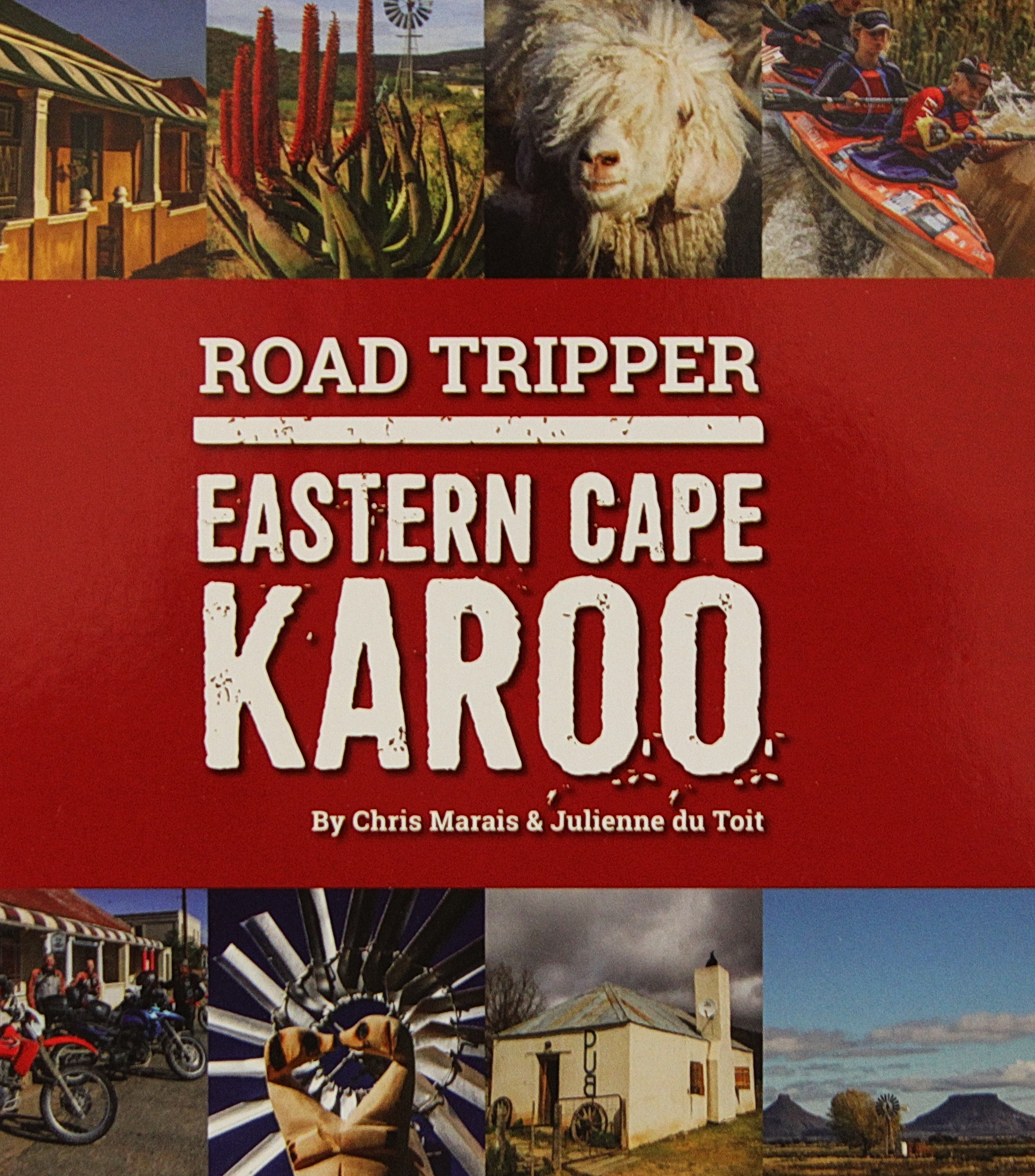
‘Road Tripper: Eastern Cape Karoo’ by Chris Marais and Julienne du Toit.

‘Moving to the Platteland: Life in Small Town South Africa’ by Chris Marais and Julienne du Toit.
This is an excerpt from Road Tripper: Eastern Cape Karoo by Chris Marais and Julienne du Toit. The authors are offering a two-book special of Moving to the Platteland: Life in Small Town South Africa and Road Tripper: Eastern Cape Karoo for only R520, including courier costs in South Africa. For enquiries, contact [email protected].




















Chris and Julienne, SO enjoy your stories and odes to that great expanse of ours, The Karoo.
And the Defender, Dog and Doughty Travellers photo – beautiful.
Those Border Collies are amazing. I don’t think there can be many farms without them.
Beautiful country, beautiful writing. Can see how people lose their hearts to the Karoo.